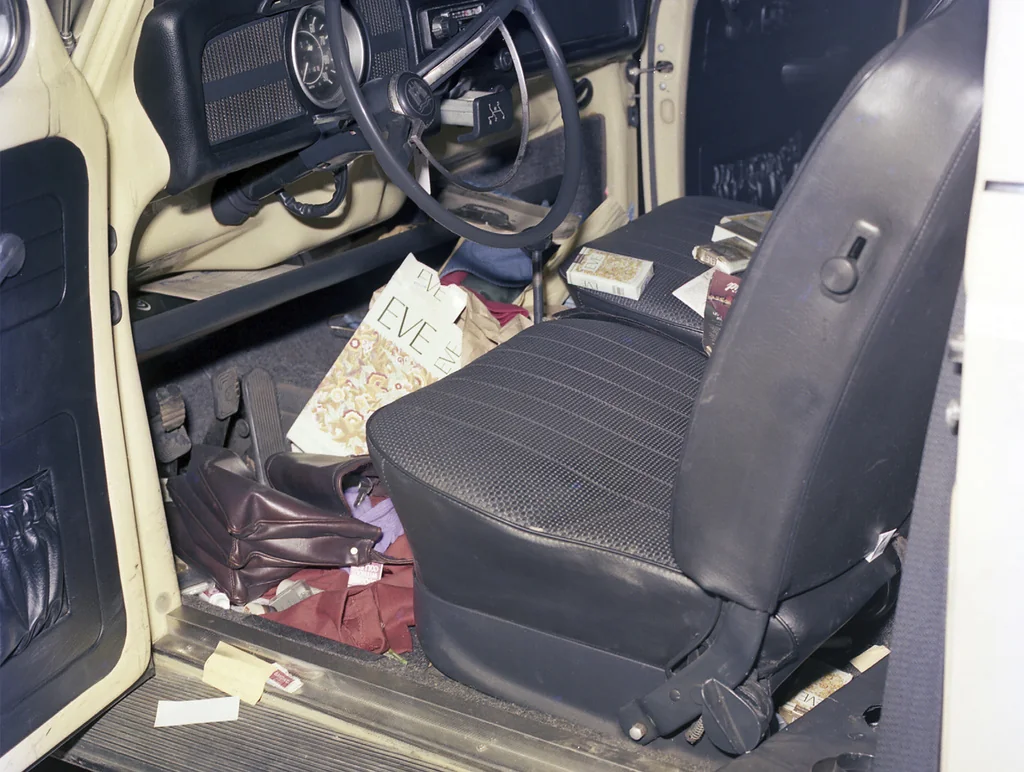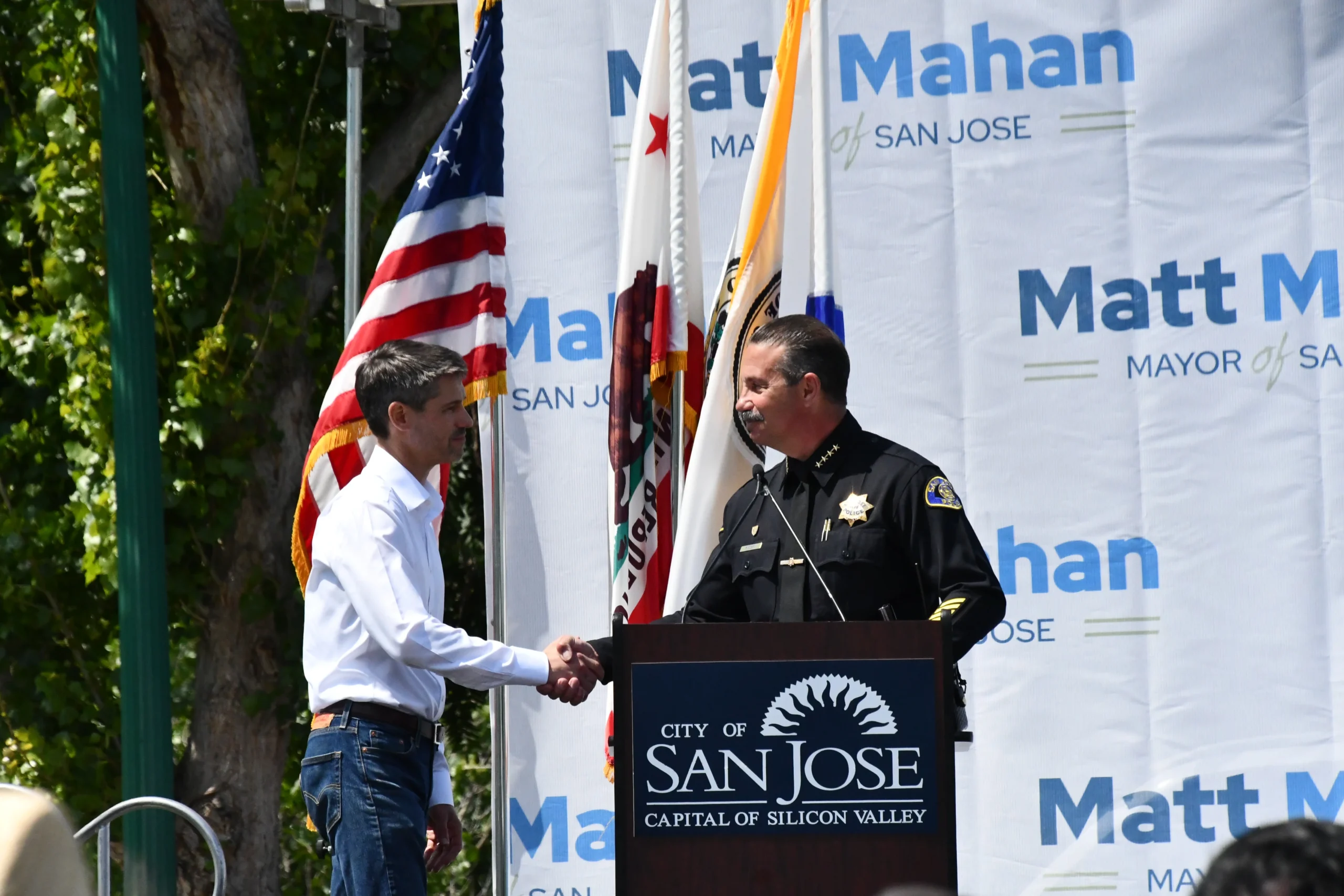While San Francisco hogs headlines on homelessness and crime, its southern neighbor, San Jose, has been quietly making bold moves — and seeing substantial results. Frustrated by years of progressive policies, voters elected Mayor Matt Mahan, who campaigned on a platform of reform. Since taking office, he has streamlined regulatory processes, strengthened law enforcement, and leveraged Silicon Valley’s innovative spirit to tackle the city’s most pressing challenges. The Washington Examiner spent several days on the ground in San Jose to gain deeper insight into the city’s evolving landscape. Part 3 of this series, The San Jose Way, takes a look at crime and efforts to reduce it.
SAN JOSE, California — San Jose achieved an extraordinary milestone by solving 100% of its homicides over the past three years, a feat believed to be unmatched by any other major city in the country.
To put that in perspective, the national homicide clearance rate is about 57.8%, according to Statista. This means about 58 out of 100 homicides are solved by arrest or by exceptional means. The year before, it was even lower.

In San Jose, it’s 100%.
Tackling crime and eliminating blight have been key priorities for Democratic Mayor Matt Mahan, a 42-year-old former tech executive who took a hefty pay cut in the private sector to serve the city. Since stepping into office, he has been working tirelessly to help restore Northern California‘s largest city to its former glory.
“Crime comes with consequences in San Jose,” Mahan said. “I don’t think there is any better proof point than this: From 2022 through 2024, we’ve achieved a 100% solve rate. And if you include cold cases that our detectives solved during that same time period, we’re at a 120% solve rate. There is no other big city in the entire country that can say the same.”
Cold cases heat up
Earlier this month, investigators in the area solved another cold case.
This time, it was the 1977 murder of Jeanette Ralston. The 24-year-old was found dead in the back seat of her Volkswagen Beetle in San Jose nearly 50 years ago. Ralston, the mother of a 6-year-old at the time, was found strangled and sexually assaulted after leaving the Lion’s Den, a local bar.

Ralston told her friends she would return in 10 minutes, but she never came back. Dogged investigators did not give up on her case, returning to it even after it went cold for a half-century. A fingerprint left on a pack of Eve cigarettes, a popular brand at the time, led to the recent arrest of Jefferson, Ohio, man Willie Eugene Sims, 69. The evidence against Sims had been stored for decades but never matched a profile.
“Last year, we threw a Hail Mary by running all of the prints from the crime scene through the FBI database one last time,” said Rob Baker, deputy district attorney for Santa Clara County.
That decision proved pivotal in cracking the case.
“The big break happened last summer when the San Jose Police fingerprint examiners told us we had a match that led our investigators to a small town in Ohio six months later,” Baker added.
The match came from a latent fingerprint that had sat idle in the case files for decades. However, a 2018 upgrade to the FBI’s fingerprint search algorithm, which allowed for more accurate and expansive matches, effectively reopened the case.
Raul Martinez retired from the SJPD homicide unit in 2018 and is now a lieutenant with the San Jose Evergreen Community College District. He left the force knowing his colleagues did not solve all the homicides in his last year and was floored when he found out his old team had done it three years in a row now.
“Amazing! They’re doing a great job,” Martinez told NBC Bay Area. “It’s unbelievable. I root for them as a retiree. I root for them.”
Reducing crime, whether old or new, is one of Mahan’s top four priorities — and he’s pulling out all the stops to achieve it.
That includes strengthening law enforcement, equipping officers with the tools to solve crimes, ramping up recruitment, and partnering with Silicon Valley tech experts to introduce cutting-edge solutions.
Recruitment
“Number one, we are understaffed and our staffing ratios are low,” Mahan told the Washington Examiner in a wide-ranging interview. “Police departments around the country are struggling with recruitment. We are putting a lot of energy into it, particularly homegrown talent.”

“We have our chief personally going and speaking to classes at our community colleges. We are really getting out there and putting a lot of time and effort into explaining to young people that careers in not just public service but public safety can be incredibly good work,” Mahan said.
Most of it is about timing, he admitted.
“It seems so obvious, but it’s catching that young person at that moment (they are considering career choices) and helping them understand why the job is so rewarding and hearing it from a credible messenger,” he added about recruitment efforts.
Leveraging technology to solve crime
Tapping into technology is also a huge part of San Jose’s mission, and it’s an area where the city is “really running fast and doing some great work,” Mahan said.
The city has deployed 500,000 cameras across various locations and regularly rotates them through hot spots to avoid predictability. This extensive camera network helped recover $3 million of stolen vehicles last year. Additionally, data from license plate readers installed on California Department of Transportation cameras at major intersections contribute to monitoring efforts. Plans include integrating body camera footage, linking live feeds from helicopters, and incorporating drone support to apprehend criminals in real time.
The SJPD also inaugurated the Real Time Intelligence Center, where strategic, tactical, and forensic analysts monitor hundreds of city-owned cameras and other resources and provide information to officers in the field in real time.
“Last month, the RTIC was able to assist with an active burglary investigation in tracking a suspect throughout the city using Fusus-enabled public safety cameras,” San Jose Police Chief Paul Joseph said. “RTIC analysts collected enough evidence for the detectives to obtain a warrant and subsequently arrest the suspect.”
The overall mission of the RTIC is to harness the power of information and leverage technology, data analysis, and collaboration to provide real-time intelligence to law enforcement officers in the field, enabling them to respond more effectively to incidents, prevent crimes, and apprehend suspects.
The RTIC was also in action on May 15 when a man was intentionally struck by a vehicle in a parking lot in San Jose.
Investigators on the scene said the deadly incident appeared to be an “intentional act.”
Homicide detectives worked with RTIC and, by using the camera network and automated license plate recognition technology, identified both a suspect vehicle and a person of interest in the crime, who was later booked on murder charges.
“Having a central nervous center in the department that has real-time data on everything is huge,” Mahan said. “Where is every officer? Where are our suspects moving? Where’s the license plate going on that vehicle? Being able to react in real time with good data allows us to move faster, spend less time on investigations, and gives us better evidence. Basically, really, leveraging technology.”
Mahan said the city has also laid a lot of groundwork around privacy data.
“We have very strict retention policies, for example, those DOT cameras,” he said. “If we’re not using that recorded footage in an investigation, we delete it every 30 days.”

Reducing blight
While the city has put technology to work, it is also focused on removing blight.
“Every San Josean should feel safer knowing that accountability is assured here in San Jose,” Mahan said. “But a safe city isn’t just about how you feel — it’s also about what you see.”
Mahan has three “proven steps” to address blight in the city: education, eradication, and enforcement.
“Thanks to this approach, we’ve removed over 1.9 million square feet of graffiti, hosted over 350 trash clean-ups, and taken nearly 10.5 million pounds of trash off our streets just this year,” he said. “If we don’t hold accountable those who degrade our public spaces, we will forever be cleaning up after them.”
Mahan said it’s unfair to tax-paying residents, small businesses burdened by repeated vandalism costs, and city staff tasked with the “seemingly Sisyphean effort of keeping the streets clean and attractive.”
As a result, the city has renewed its focus on enforcement.
“We’re conducting graffiti stings, we’re catching prolific vandals and illegal dumpers, and we’re taking grossly negligent property owners to court,” Mahan said. “Some of our most prolific taggers are serving their time by beautifying our community instead of defacing it.”
The city is also working with Union Pacific and the California Department of Transportation to deliver new freeway signs that have been tampered with, faster marijuana abatement, putting in place new deterrents to vandalism, and collaborating to clear the homeless encampments that have popped up alongside freeways and on the side of train tracks.
THE SAN JOSE WAY: ARRESTING THE HOMELESS AND ENCAMPMENT SWEEPS
During his recent state of the city address, Mahan told residents that San Jose isn’t “hiding from the future, we’re embracing it.”
“We’re creating it and we’re shaping it for public good,” he said, adding, “San Jose is poised to be a model for the state and rest of the nation. Not just because we’ve got the power and data center demand, but because we’ve gotten back to basics, and this focus is showing promising results.”
























